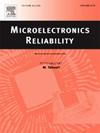Orbital validation for tin whisker suppression by conformal coating
IF 1.9
4区 工程技术
Q3 ENGINEERING, ELECTRICAL & ELECTRONIC
引用次数: 0
Abstract
To investigate the use of lead-free tin-based parts for satellites, the effectiveness of using a conformal coating for suppressing the growth of tin whiskers in Earth orbit was validated. An exposed handrail attachment mechanism on Kibo, the outboard platform of the International Space Station, was used in the experiments in the study. Experimental samples were exposed in orbit for up to four years, and the ability of parylene and polyurethane coatings to suppress whisker growth was investigated. Numerous thin, long, and straight whiskers grew in orbit on the uncoated samples, but the whiskers did not penetrate the parylene- and polyurethane-coated samples. In addition, no whiskers were generated from tin plating under these coatings. Parylene exhibited hardness, which completely suppressed the growth of whiskers and nodules. Polyurethane, being a softer material, showed some nodules under the coating, but no whiskers were observed. Furthermore, there was no difference between the whisker suppression effect in the orbital and ground test samples for both coatings. There was also no significant degradation in the hardness or Young's modulus of the coatings. These results demonstrate that lead-free parts coated with parylene or polyurethane can be used in satellites operating in this orbit for four years. To our knowledge, this is the first study to report and clarify the effects of a conformal coating on whisker suppression in Earth orbit.
保形涂层抑制锡晶须的轨道验证
为了研究卫星无铅锡基部件的使用,验证了在地球轨道上使用保形涂层抑制锡晶须生长的有效性。在这项研究的实验中,使用了国际空间站的舷外平台Kibo上的一个暴露的扶手连接机构。实验样品在轨道上暴露长达四年,并研究了聚对二甲苯和聚氨酯涂层抑制晶须生长的能力。在未涂覆的样品上,有许多又细又长又直的晶须在轨道上生长,但这些晶须并没有穿透涂覆了聚对二甲苯和聚氨酯的样品。此外,在这些涂层下镀锡没有产生晶须。聚对二甲苯表现出一定的硬度,完全抑制了晶须和结核的生长。聚氨酯是一种较软的材料,在涂层下有一些结节,但没有观察到须。此外,两种涂层在轨道和地面测试样品中的晶须抑制效果没有差异。涂层的硬度和杨氏模量也没有明显的下降。这些结果表明,涂有聚对二甲苯或聚氨酯的无铅部件可以在该轨道上运行四年。据我们所知,这是第一个报告和阐明保形涂层对地球轨道上晶须抑制的影响的研究。
本文章由计算机程序翻译,如有差异,请以英文原文为准。
求助全文
约1分钟内获得全文
求助全文
来源期刊

Microelectronics Reliability
工程技术-工程:电子与电气
CiteScore
3.30
自引率
12.50%
发文量
342
审稿时长
68 days
期刊介绍:
Microelectronics Reliability, is dedicated to disseminating the latest research results and related information on the reliability of microelectronic devices, circuits and systems, from materials, process and manufacturing, to design, testing and operation. The coverage of the journal includes the following topics: measurement, understanding and analysis; evaluation and prediction; modelling and simulation; methodologies and mitigation. Papers which combine reliability with other important areas of microelectronics engineering, such as design, fabrication, integration, testing, and field operation will also be welcome, and practical papers reporting case studies in the field and specific application domains are particularly encouraged.
Most accepted papers will be published as Research Papers, describing significant advances and completed work. Papers reviewing important developing topics of general interest may be accepted for publication as Review Papers. Urgent communications of a more preliminary nature and short reports on completed practical work of current interest may be considered for publication as Research Notes. All contributions are subject to peer review by leading experts in the field.
 求助内容:
求助内容: 应助结果提醒方式:
应助结果提醒方式:


